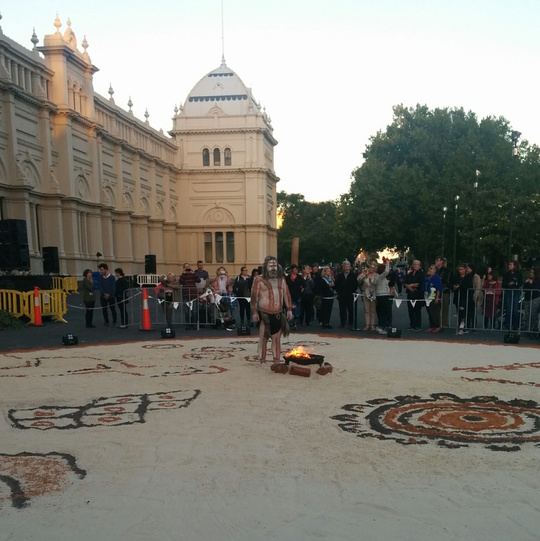
Report: Melbourne and Sydney Study Tour Jiaxi Hou
- Time and Date
- from Saturday, February 19 to Friday, February 26, 2016
- Venue
- The University of Melbourne and The University of Sydney
- Organized by
- the Educational Project 5 "Cultural Diversity and Imagination," Integrated Human Sciences Program for Cultural Diversity, The University of Tokyo
My participation in the Melbourne/Sydney study trip conducted by Project 5 allowed me to gain memorable experiences. This trip provided me with opportunities to rethink my own identity and expand my research interests. We first stayed in Melbourne for two days. During that time, we visited the Melbourne Museum and the National Gallery of Victoria Australia, attended the annual White Night festival, and participated in lectures on the aboriginal history in Australia as well as Australian immigration policy. Next, we spent four days exploring Sydney with some local students from the University of Sydney. We participated in four mini field trips around the city that centered on the topics of Aboriginal Australian culture, the multicultural integration in Australians' everyday lives, and environmental diversity. The study trip provided me with fresh knowledge and firsthand experiences, in particular with the aboriginal culture in Australia. I was greatly inspired.
Aboriginals have lived on the continent for at least 40,000 years. Their cultural heritage is distinguished from the Western culture. They hold unique believes regarding nature, labor, gender relations, and community. However, the arrival of the British in 1788 significantly changed the aboriginal living styles. The colonists took land and young children from the aboriginal families. The segregation and racist policies left an unhappy legacy on contemporary Australia. In the past, aboriginals were excluded from the discourse on Australian history. However, today they strive for equal rights. Although they are collectively referred to as the aboriginals, diversity is an essential factor among aboriginal communities. There are over 400 aboriginal tribes on the continent. These tribes have different languages, rituals, and other cultural features. The aboriginal people's experiences and efforts remind me of many similar challenges that ethnic minority groups face in China today.
I learned about these facts from firsthand experiences during the field trips in Australia and through discussions with local students, rather than just from textbooks or lectures. At the Melbourne Museum, I listened to the distinct types of language from the different aboriginal communities. I also learned separately from the Sydney Observatory and Sydney Museum that aboriginal communities living inland and along coastal lines had very different survival skills, thus different philosophical perspectives toward nature. The harbor tour organized by the Tribal Warrior Association illustrated the dilemma of conserving the aboriginal culture while simultaneously earning a living through tourism. The aboriginal art articulated that aboriginal people endeavored to express themselves and strive for their rights.
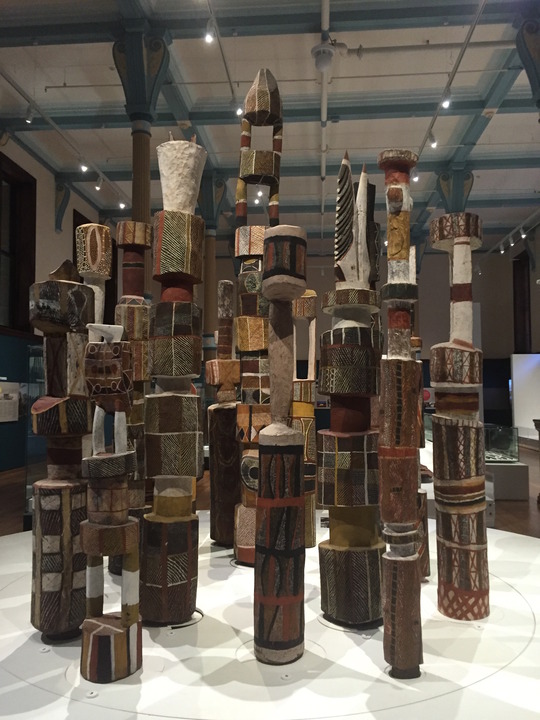
My most precious experience in Sydney was the field trip to an aboriginal island. This trip was organized by a community organization founded and directed by aboriginal elders. An aboriginal tour guide showed us around the island. This guide provided us with considerable vivid knowledge about the aboriginal culture, such as how they found their lost children by observing specific types of trees in forests, or how they kept a fire alive in a boat during ancient times. He even taught us how to perform a traditional dance. However, he was reluctant to share with us how contemporary aboriginal people currently live. How many traditions do they continue to preserve in everyday life? In the guide's story, aboriginal culture was static, primitive, and romantic. It focused on catching fishes and starting fires. However, after the trip, I saw him carrying an Adidas bag and hurrying to catch a train at the Circular Quay Station, just beside the Opera House. It was obvious that today's aboriginal people never made fires in the city of Sydney. Therefore, how do they maintain their culture and community? The guide never introduced these new stories into his narratives. The interaction with the tour guide made me feel strongly about the difficulties in preserving the "essential" aboriginal culture in a modernized society. From one perspective, aboriginal people are disadvantaged in the areas of health, education outcomes, and employment. These are sad colonial legacies that remain influential today. Many of the aboriginals have to rely on tourism to earn a living (Behrendt and Larissa, 2012). Conversely, they only depicted themselves in a past tense, as if their culture had not changed for over thousands of years. Although the profits made through tourism can improve the living standards for many aboriginal communities, it is also a double-edged sword, as it masks the aboriginal people's presence in current society. The aboriginal cultures articulated in the past tense are welcomed in Australian discourse (Elder, 2007). They are also significantly more attractive as the exotic scenes can be perfect tourists' selling points. Nonetheless, this can still be regarded as a manner of exclusion, because the aboriginal people's presence is "eradicated" (Elder, 2007). It also helps to establish the aboriginal people as the Other of (the white) Australian society. Furthermore, the dichotomies of the aboriginal people and the white Australians eliminate the diversity within these groups. This would be illogical in a so-called immigrant country consisting of immigrants from diversified ethnic backgrounds.
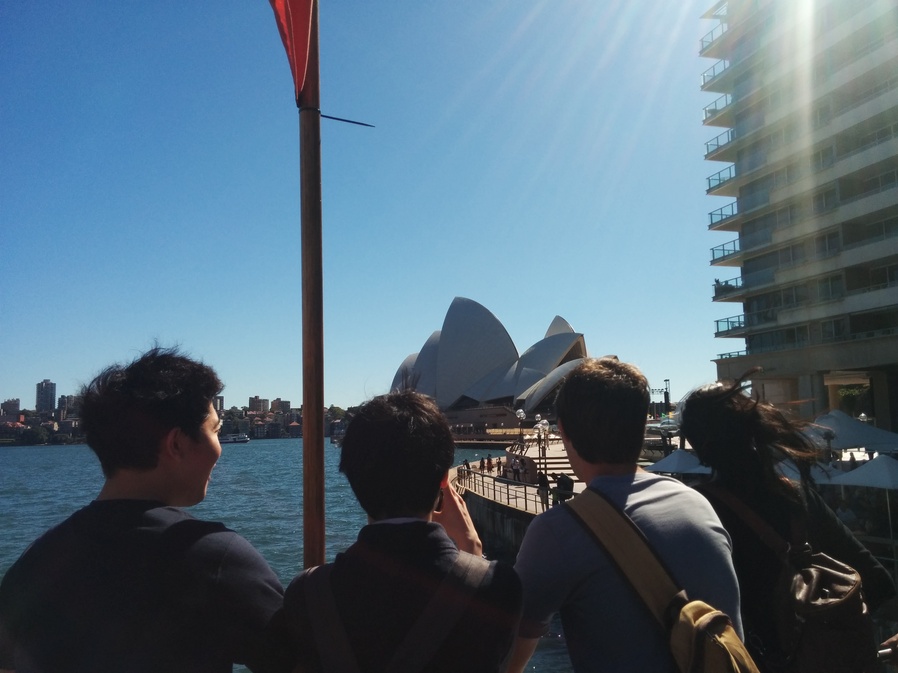
An incident during the trip left a deep impression on me. The tour guide discussed the copyright issue regarding his performance with us. When he was dressed in traditional costumes and make-up, he allowed us to photograph him. However, the guide forbade us from posting photos or videos on SNS. In his words, (white) people living on the shore of Sydney Harbour need to pay and take the trip to the (aboriginal) island to enjoy his performances, rather than watch free videos on YouTube. However, a local Sydney student questioned why he did not make use of YouTube or social media to reach larger audience and gain more profits. I regarded this issue as a symbol of the aboriginal people's self-determination. Who is able to claim on the copyright is not only the key question in the case, but also the fundamental question when we discuss minority groups' self-determination. Who should have the rights and benefit from the aboriginal culture? For example, in this case, who has the rights? Would it be the visitors who secretly record the guide and post him on a website or the guide himself? It may be obvious in this case that the guide should have the right. However, the reality is that many international middlemen still benefit from exploiting aboriginal artists. White governors now also maintain the right to decide what is good for the aboriginal communities, thus treating them unequally and regarding them as someone who need to be "protected" (Elder, 2007). I could also sense the aboriginal people's silence during the trip, as we had many less opportunities to interact with aboriginal peers compared to other ethnic groups. The local Sydney students we encountered had diversified backgrounds, but none of them were aboriginal. How can we attain relatively fair opinions when we discuss an ethnic minority group's issues if they are actually absent? Although I also was able to learn about the aboriginal people striving for rights from other opportunities, such as visiting Boomalli Aboriginal Artists Cooperative for the Alterity Exhibition, these details still indicate the difficulty in overcoming minority groups' silence.
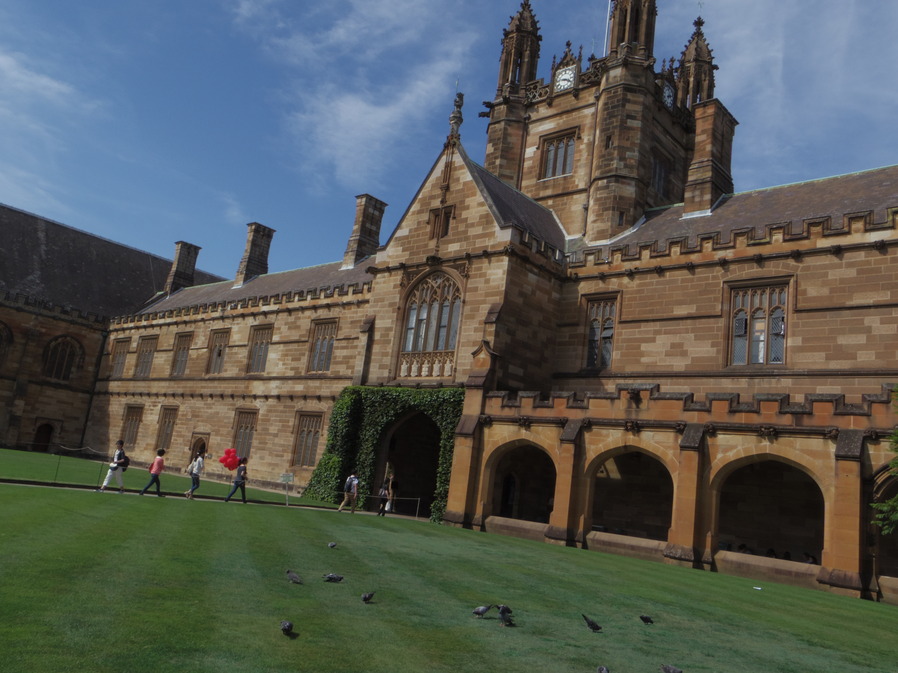
Third, the concept of a "textbook blackfella" cited in discussions on the aboriginal culture gained my interest as it reminded me of my own ethnic identity in China. A "textbook blackfella" refers to someone who gains his or her aboriginal knowledge through reading, not being (Elder, 2007). The aboriginal people we met during the trip, including the tour guide mentioned above and the staff member who explained aboriginal astronomy at the Sydney Observatory all had a rich knowledge of traditional aboriginal culture. However, they also lost many details when they learned this. For example, the staff member knew that almost every aboriginal tribe had its own totem (through reading), but he did not know what his tribe's totem was (through being). In my opinion, the "textbook blackfella" indicates a resurgence of ethnic identity after ruptures. Being a Manchu, an ethnic minority group in the northeastern part of China, I strongly resonated with this situation. I am a textbook Manchu, as I did not have any access to Manchu culture or history before I learned about it myself during my undergraduate studies. I believe that from one perspective, the concept can be regarded as a factor to evaluate a subculture's liveliness. Conversely, it may also hint that a younger generation has an interest in accessing the traditional cultures of their own ethnic backgrounds.
As I belong to an ethnic minority group, I strongly sense the similarities between the Manchu people in China and the aboriginal people in Australia. They are obviously different from social and historical contexts. For example, the Manchu people used to rule the Han Chinese in the Qing Dynasty and were regarded as the biggest traitors in the second Sino-Japanese War. However, to some extent, the Manchu culture's tangled situation could be compared to the aboriginal culture in Australia. I find similarities in the historical tensions, the forced assimilation with the majority, the need to establish the minority as an exotic/barbarian in both social contexts, and the consumption of the Other in popular culture. Historical tensions between Manchu and Han Chinese have always existed. However, today, most of the traditional Manchu culture has disappeared, including the language, history, ritual ceremonies, social etiquettes, and clothing. Most Manchu believe that their traditional cultures should be abandoned and that being assimilated by the Han Chinese is positive progress for the entire ethnic community. The situation becomes more complicated as Chinese popular culture is keen on consuming the Manchu history and imperial lives of the Qing Dynasty. Therefore, the week I spent in Australia focusing on the topic of aboriginal culture greatly inspired me to reflect on my own ethnic identity, as well as to expand my research interest to include the struggle between minorities and the mainstream. I would like to express my gratitude to the professors and staff who strived to make the trip possible. Additionally, I would like to thank to the IHS program for offering me the opportunity to participate in such wonderful trip.
References
Behrendt, Larissa. Indigenous Australia for dummies. John Wiley & Sons, 2012.
Elder, Catriona. Being Australian: Narratives of national identity. Allen & Unwin, 2007.
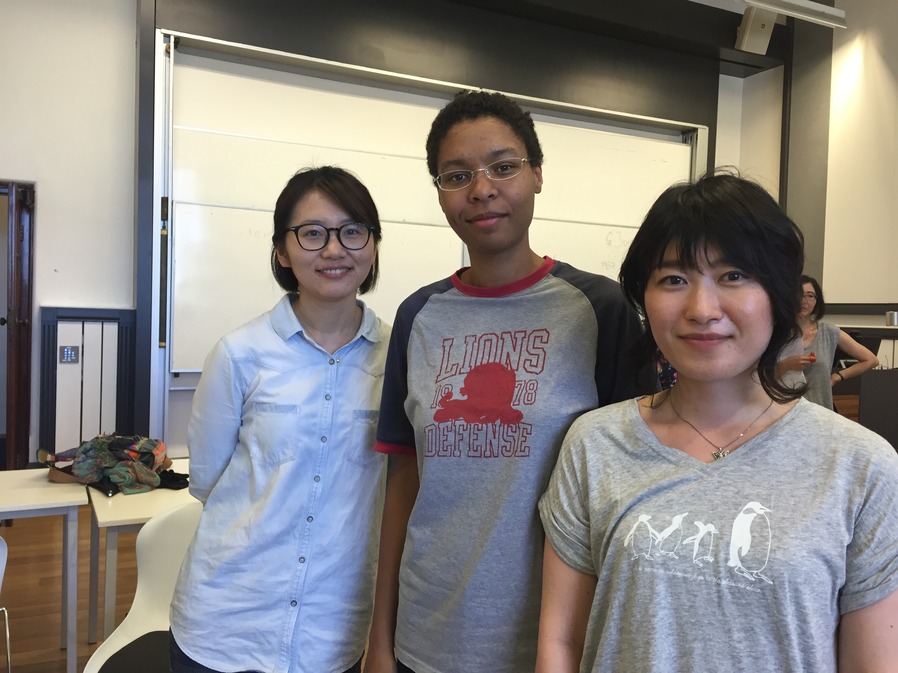
報告日 : 2016年3月13日


